
Fight On, Sim! Iness Set World Record In 1953
Something was missing when Sim Iness of Southern California threw a world record 190-0⅞ (57.93m) at the 1953 NCAA Track & Field Championships in Lincoln, Nebraska.
“Iness got off his throw with such ease he omitted his usual grunt,” reported Cordner Nelson of Track & Field News.
“The discus left my hand so easy I figured it wasn’t going very far,” explained Iness, repeating his title from 1952. “I never spun in the ring as fast as I did today.”
The ease of the throw belied the difficulty Iness experienced during the 1953 season.
Earlier in the year Iness – whose first name of “Sim” is actually short for “Simeon” – was dominating his collegiate competition much the way a 1952 Olympic gold medalist would be expected to. But a fall down some steps set him back some 25 feet from when he threw 185-5¼ (56.52m) in April – merely the longest by an American on U.S. soil.
Then, a week before the NCAA Championships, Iness was hit squarely in the mouth by a flying disc, leaving him questionable for the meet. But, when he eventually arrived in Nebraska and launched a meet record of 183-0 (55.78m) in the trials, everybody knew he was good to go.
The WR effort came on his third and final effort the next day in the finals as Iness successfully defended his NCAA title. Second place – for the second-straight year – went to teammate Parry O’Brien, who would go on to win repeat as NCAA shot put champion.
Fun fact: Iness was a high school teammate of Bob Mathias. Both graduated from Tulare (California) High School in 1948 and Mathias went on that summer to win the first of two Olympic golds in the decathlon. As the 10-eventer would not become part of the NCAA meet until 1970, Mathias was NCAA runner-up for Stanford in the 1951 discus and 1952 120-yard hurdles.
The NCAA and collegiate track & field will mark a momentous milestone in the spring of 2021 -- the 100th anniversary of the NCAA Championships and with that, the NCAA Track & Field Championships. In June 1921, the University of Chicago hosted the first track & field championships in NCAA history.
This point can’t be emphasized enough: Not only was the event the first for NCAA track & field, but the first championships for any sport under the sponsorship of the NCAA.
To celebrate, over each of the next 365 days, the U.S. Track & Field and Cross Country Coaches Association (USTFCCCA) will celebrate moments, student-athletes, and coaches that have made a century’s worth of championships special. From humble beginnings to important historical milestones to the modern-day, collegiate track & field has evolved with the American society.
The 2021 edition of the NCAA Division I Outdoor Track & Field Championships begin with preliminary round action on May 27-29 in Jacksonville, Fla., and College Station, Texas. The championships final site and culmination of the celebration is slated for June 9-12, 2021 at the newly rebuilt Hayward Field in Eugene, Ore.
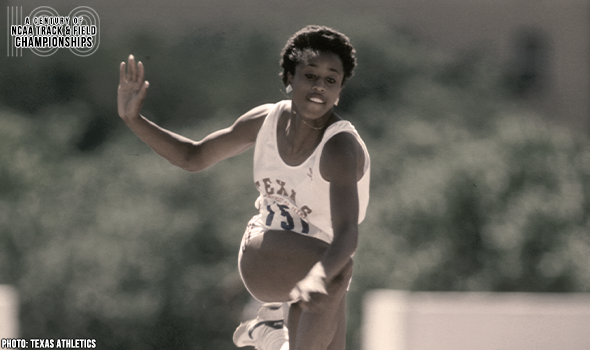
Texas’ Turner Soared To Triple Jump Greatness
Terri Turner was a two-time TJ champion at the NCAA DI Outdoor T&F Championships. When Turner won her 2nd title in 1986, she set an all-time world best of 13.66m (44-9¾).
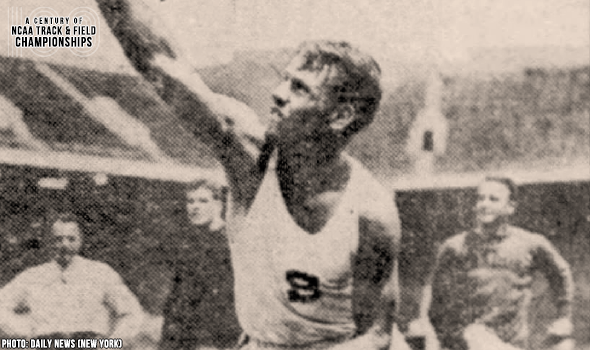
Stanford’s Rothert Starred In The Shot Put
Harlow Rothert won three consecutive shot put titles at the NCAA Outdoor T&F Championships between 1928 & 1930. He set meet records in both 1929 and 1930.

Indiana’s Kharun Set Javelin MR In 2003
Irina Kharun won the javelin title at the 2003 NCAA DI Outdoor T&F Championships with a meet record heave of 61.82m (202-10). It also helped her win by more than 30 feet!
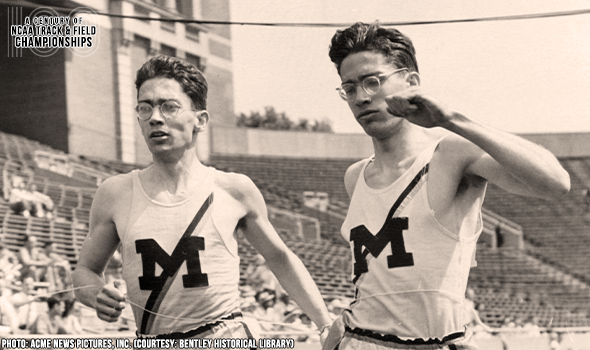
Hume Brothers Had Officials Seeing Double
Twins Robert & Ross Hume purposefully tied for the mile crown at the 1944 NCAA Outdoor Track & Field Championships. They tried again in 1945, but officials gave Ross the win.
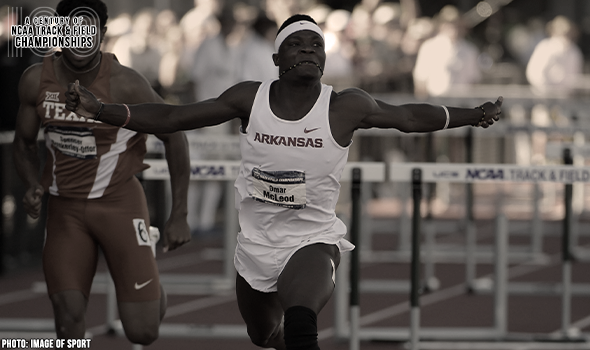
Woo Pig Sooie! McLeod Sizzled Track In 2015!
Omar McLeod clocked a sizzling 13.01 (+3.9) to win the 110HH at the 2015 NCAA DI Outdoor T&F Championships. Only one man had ever gone faster in meet history at the time.

Felicien Starred In The 100H At NCAAs
Perdita Felicien won back-to-back 100H titles at the NCAA Division I Outdoor T&F Championships in 2002 & 2003. She set a MR of 12.68 in the semifinals on the way to title No. 2.

Truly “Unbroken,” Zamperini Shined At NCAAs
Louis Zamperini set a meet record in the mile of 4:08.3 at the 1938 NCAA Outdoor T&F Championships. Zamperini, who also won the mile in 1939, saw his record last 15 years.

Hughes Soared To Three Consecutive HJ Titles
Tanya Hughes was the first woman to win three high jump titles at the NCAA Division I Outdoor T&F Championships. Hughes did so consecutively in 1991, 1992 & 1993.
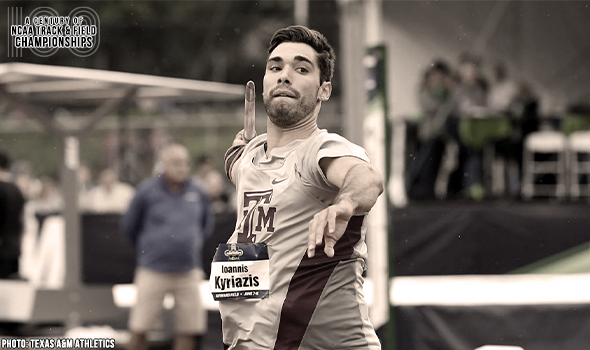
Kyriazis Made Point With Javelin In 2017
Ioannis Kyriazis set a meet record in the javelin of 82.58m (270-11) and won by more than 19 feet at the 2017 NCAA DI Outdoor T&F Championships.
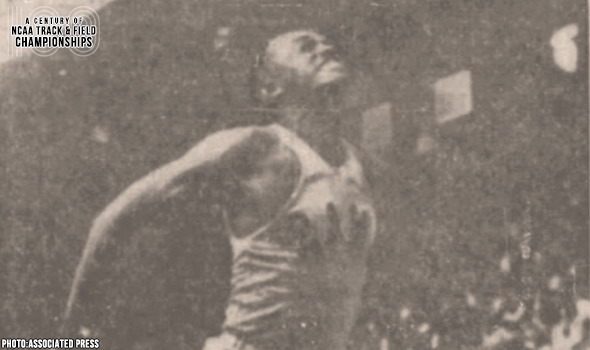
Sharpe Bounded To Meet History In 1956
Bill Sharpe became the first man to eclipse the 50-foot barrier in the triple jump at the NCAA DI Outdoor T&F Championships in 1956. Sharpe won with his 15.36m (50‑4¾) effort.

